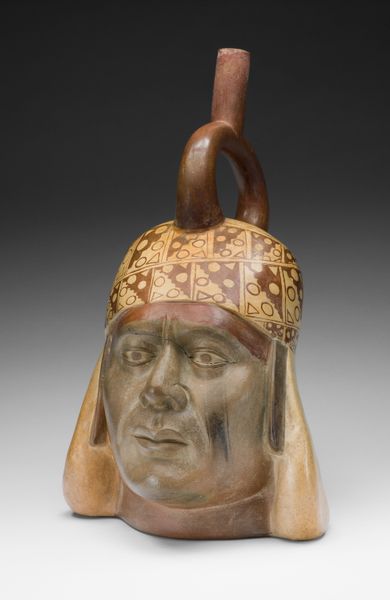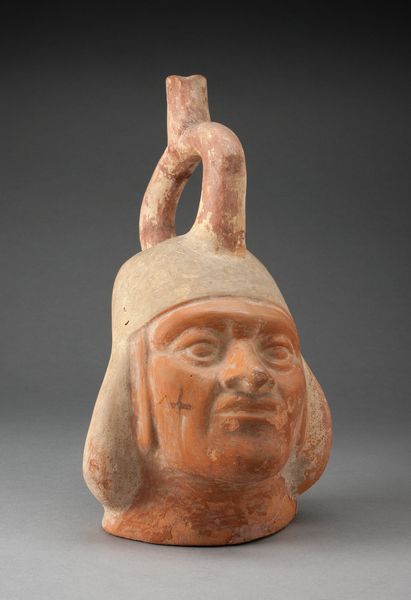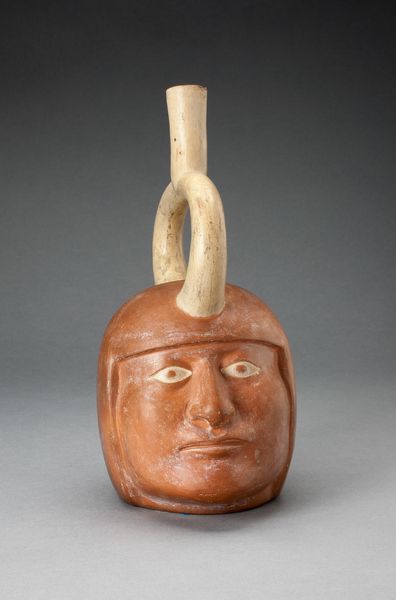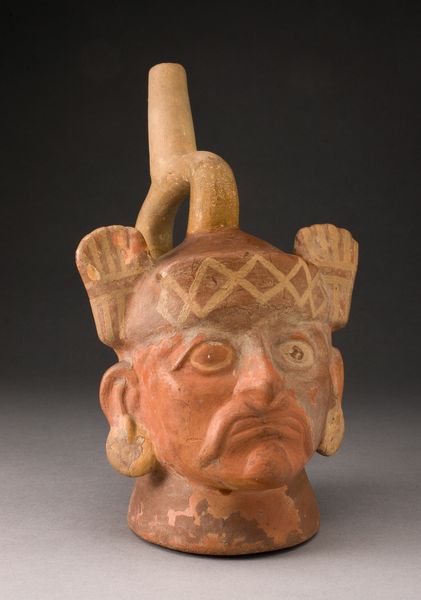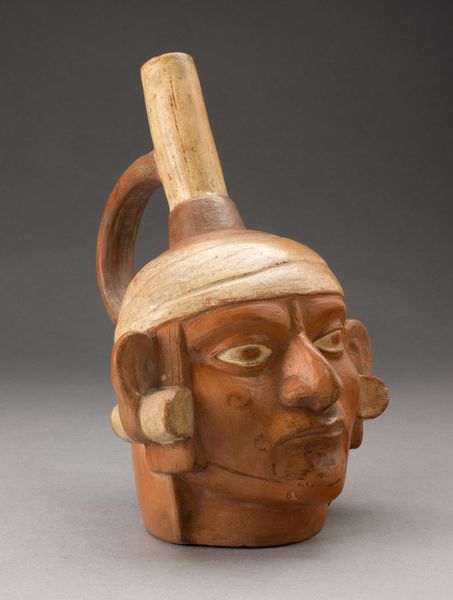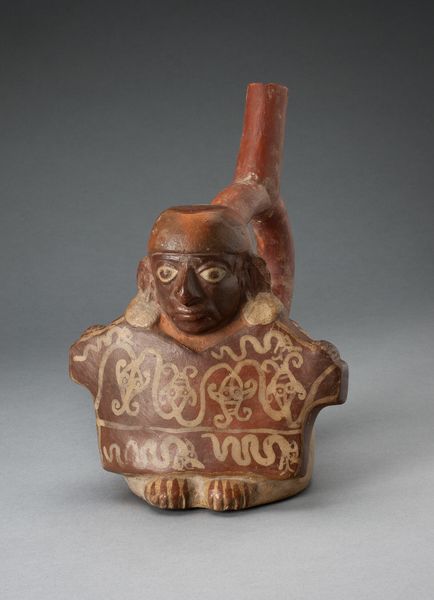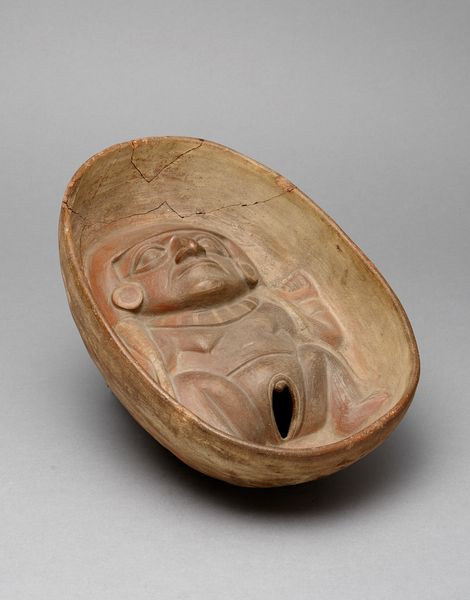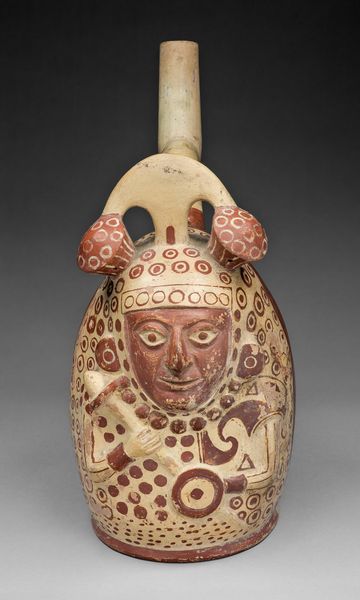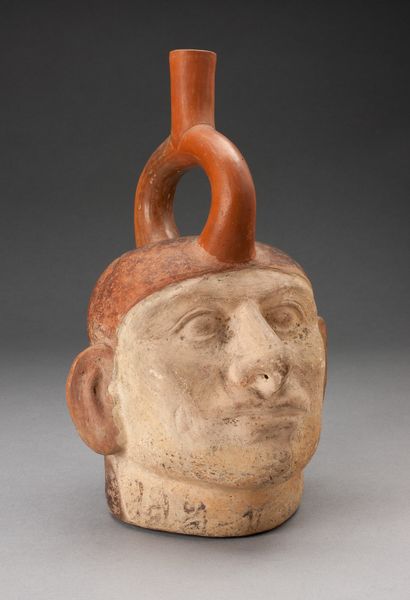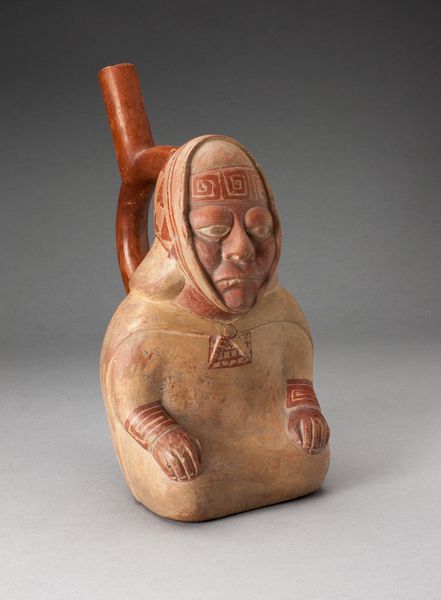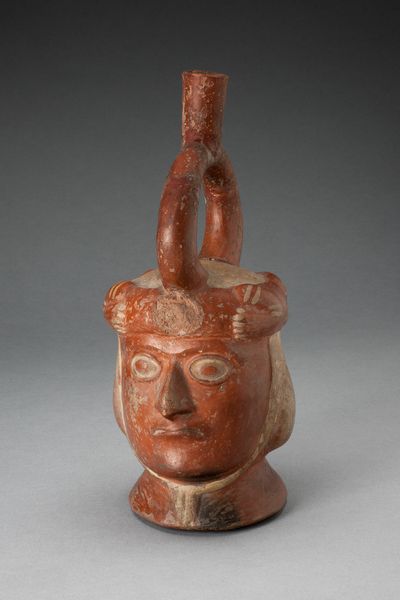
ceramic, terracotta
#
portrait
#
ceramic
#
figuration
#
terracotta
#
indigenous-americas
Dimensions: 30.5 × 22.7 cm (12 × 8 15/16 in.)
Copyright: Public Domain
Curator: The face has such solemnity. I immediately think of ancestor reverence and dynastic power. Editor: Absolutely. What we're seeing here is a ceramic portrait vessel from the Moche culture, dating roughly from 100 to 500 CE. It’s part of the collection at the Art Institute of Chicago. The piece exemplifies the figuration that characterized Moche artistry. Curator: Ceramic, such a fundamental material. What strikes me is the directness of the modelling—the artist is building this leader up, coil by coil maybe, from the earth. Editor: And consider the social context—Moche society was highly stratified. These portrait vessels were probably created to honor specific individuals, reinforcing their authority and place within the social hierarchy. Think about the indigenous Americas, complex belief systems, political landscapes all interwoven. Curator: So, a utilitarian object elevated to a symbol of authority. But there’s an intimacy here too, a maker carefully shaping clay to capture the likeness, the power. What kind of labor went into the production of this? Where did they source the clay and pigment? Editor: Precisely! And we must consider who had access to these objects? What rituals were they involved in? This ruler depicted probably commanded agricultural labor, controlled irrigation systems, and religious ceremonies. Curator: The smooth surfaces seem almost polished. Did they have specialized tools, or was this all done by hand? Also, notice the spout at the top—its function, of course, but it also almost extends this man's gaze upwards, into the sky. Editor: A lot of the answers surrounding its craftsmanship, material choices, the labor required to make the art piece remains a subject for historians to examine. We are fortunate that examples, like this, provide insights into the indigenous perspective, values, and societal concerns. Curator: A reminder that art is never just aesthetic; it's a record of human endeavor, technological innovation, and the raw resources that shape our world. Editor: Exactly, each vessel holds the sediment of culture and belief from the past that prompts us to evaluate social dynamics.
Comments
No comments
Be the first to comment and join the conversation on the ultimate creative platform.
